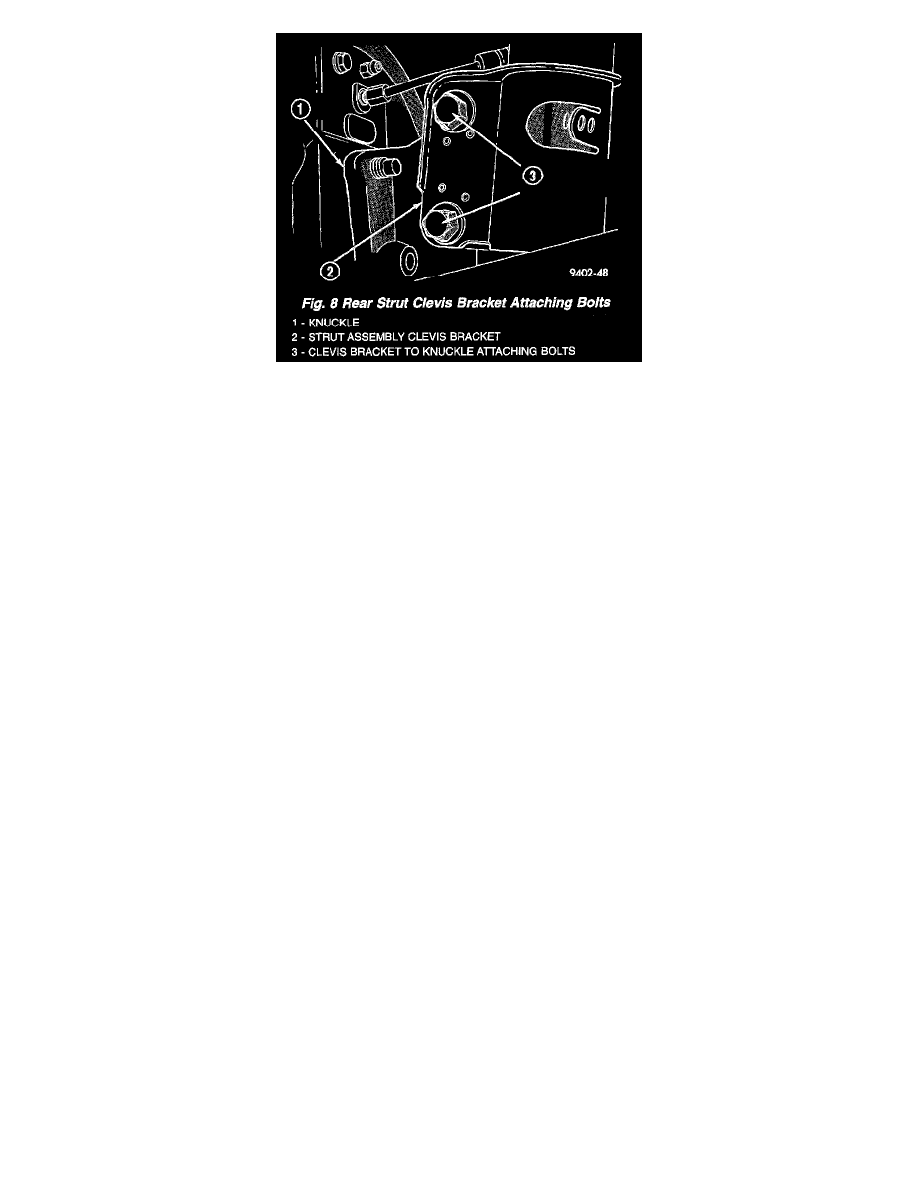Neon R/T L4-2.0L VIN F HO (2001)

3. Remove the original upper bolt attaching the strut clevis bracket to the knuckle.
4. Install a bolt from the adjustment package into the hole where the original bolt was removed. Install the bolt from the rear.
5. Install a nut provided in adjustment package on the replacement bolt. Tighten the nut until it's snug, but still allowing the knuckle to slide in the
clevis bracket.
6. Remove the original lower bolt.
7. Install a bolt from the adjustment package into the bottom hole of the strut clevis bracket. Install the bolt from the rear.
8. Install a nut provided in adjustment package on the replacement bolt. Tighten the nut until it's snug.
9. Reinstall the tire and wheel assembly.
10. Perform the above procedure to any of the remaining struts as required.
11. Lower the vehicle and jounce the front and rear of the vehicle.
12. Adjust the front or rear camber to the preferred setting by pushing or pulling on the top of the tire. When camber is set to specifications, tighten the
upper and lower strut clevis bracket bolts. Again jounce the front and rear of the vehicle, then verify the camber settings.
13. Torque front strut clevis bracket-to-steering knuckle attaching bolts to 53 Nm (40 ft. lbs.), plus an additional 114 turn after the torque is met.
Torque the rear strut clevis bracket-to-rear knuckle attaching bolts to 95 Nm (70 ft. lbs.).
14. Once camber is within specifications, adjust toe to meet the preferred specification setting.
Camber and Caster Adjustment
CAMBER AND CASTER
Front and rear camber and caster settings on this vehicle are determined at the time the vehicle is designed, by the location of the vehicle's suspension
components. This is referred to as Net Build. The result is no required adjustment of camber and caster after the vehicle is built or when servicing the
suspension components. Thus, when performing a wheel alignment, caster and camber are not normally considered adjustable angles. Camber and
caster should be checked to ensure they meet vehicle specifications.
If either front or rear camber is found not to meet alignment specifications, it can be adjusted using an available camber adjustment bolt package.
Before installing a camber adjustment bolt package on a vehicle found to be outside the specifications, inspect the suspension components for any
signs of damage or bending.
No adjustment can be made to the caster setting on this vehicle. If the vehicle's caster is not within alignment specifications, check for damaged
suspension components or body parts.
CAUTION: Do not attempt to adjust the vehicles wheel alignment by heating or bending any of the suspension components.
Front Toe Adjustment
TOE
1. Center the steering wheel and lock it in place using a steering wheel clamp.
NOTE: When performing the toe setting procedure, make sure the rear toe is set to the preferred specification before setting the front toe to the
preferred specification.
FRONT TOE
CAUTION: Do not twist the inner tie rod-to-steering gear rubber boots while turning the inner tie rod during the front toe adjustment.
